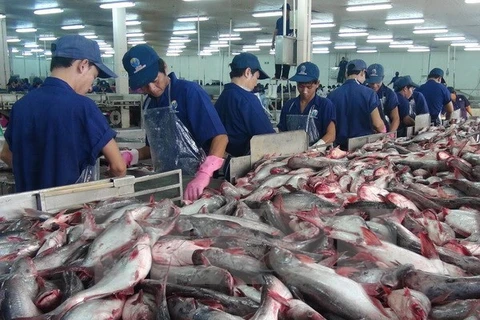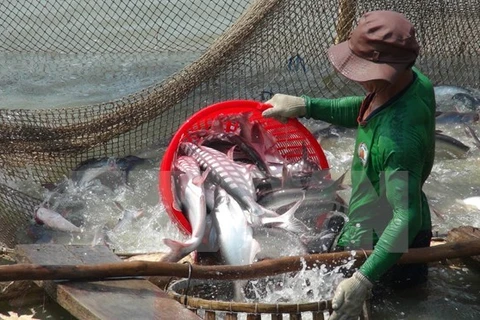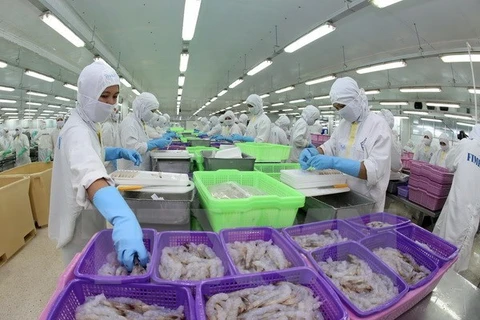Hanoi (VNA) - Officials expect Vietnam’s tra fish (pangasius) export value to continue falling this year, according to the Vietnam Association of Seafood Exporters and Producers (VASEP).
The decrease is due to anti-dumping tariffs, the US programme on monitoring catfish, and pressure from competition selling other types of white-meat fish, the association said.
Officials anticipate that the value of the tra fish export will see a year-on-year drop of 5 percent to 1.5 billion USD this year. To regain its value, the domestic fishery industry should seek to sell in more export markets and increase its market shares in existing ones.
The association reported that in 2015, the total tra fish export value reached 1.6 billion USD, which was 10 percent lower than that in 2014.
Six out of the eight largest export markets for Vietnamese tra fish saw reductions in the export value in 2015 against 2014. The export value of Vietnamese tra fish fell by 5.6 percent to the US, 14.3 percent to the European Union (EU), 4.3 percent to ASEAN, 39.8 percent to Brazil, 13.9 percent to Colombia and 13.2 percent to Mexico.
Meanwhile, the export value rose by 17 percent to the UK, 42 percent to mainland China and Hong Kong, and 2.4 percent to Saudi Arabia.
In most large markets, the export of Vietnamese tra fish products faced many challenges, such as lower demand, no increase in selling prices and increasingly strict standards on quality, food hygiene and safety, the association said.
Particular concern has been the recent US preliminary results of its anti-dumping duty administrative review (POR-11) on Vietnamese tra fish fillets, which caused an immense impact on exports.
VASEP Chairman Ngo Van Ich said the two mandatory reviewed exporters – Hung Vuong and Thuan An companies – will have to pay tariffs of 3.6 US cents per kilo and 8.4 US cents per kilo, respectively, while 16 other exporters will be taxed 6 cents per kilo. At the tax rate of 6 US cents, most companies will be unable to export to the US.
Also, the new US inspection rules on tra fish suppliers pose great challenges to Vietnamese exporters, he said. Since September 2017, all countries have to submit lists of establishments that currently export pangasius to the US, as well as documents proving that their products follow regulations set by the US Department of Agriculture's Food Safety and Inspection Service (FSIS). If the procedures are not followed, the companies will be barred from exporting products to the US.
The food safety service needs eight years for consideration of granting certificates to foreign companies on exporting their products to the US, according to US standards. That is a direct challenge to local firms, the association said.
Duong Ngoc Minh, VASEP Deputy Chairman and Hung Vuong Group's CEO, said that local seafood companies should not pay less attention to the US market and also focus on Asian markets with a total population of 3 billion people, including China and ASEAN.
To have stable and sustainable development of tra fish in coming time, the Ministry of Agriculture and Rural Development (MARD) should soon issue Decree 36 to ensure the quality of tra fish products, Minh said.
He also said the Government, the MARD and Ministry of Industry and Trade should have policies on advertising tra fish products at home and in foreign markets to promote consumption.
Officials said that tra fish consumption in the domestic market has accounted for only 5 percent of the total volume.-VNA

Tra fish industry needs makeover
After a hasty start, Vietnam's tra fish industry should now plan an image makeover to improve the quality of exports and be competitive, for the long term, experts said.

























